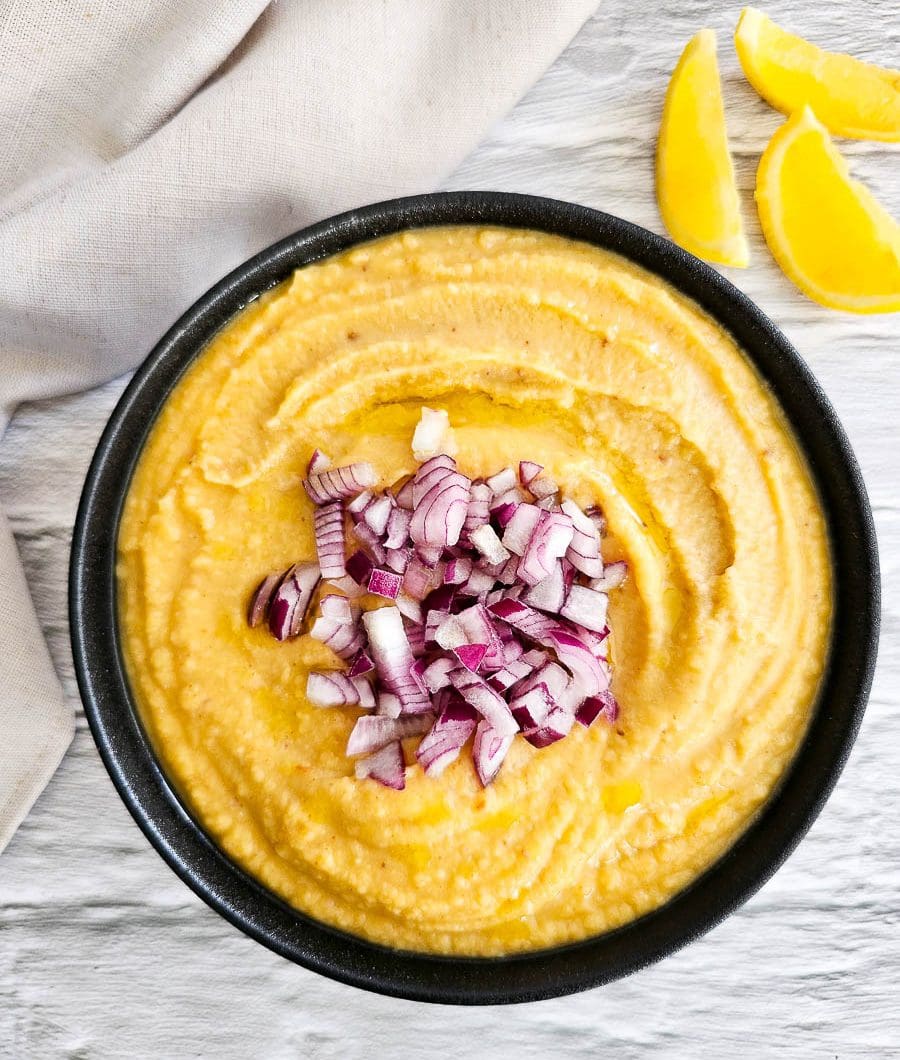Greek Fava is the ultimate comfort food. It’s a creamy purée made by gently simmering yellow split peas with onion and olive oil and then finished off with a drizzle of fresh lemon juice. It doesn’t get simpler than this!
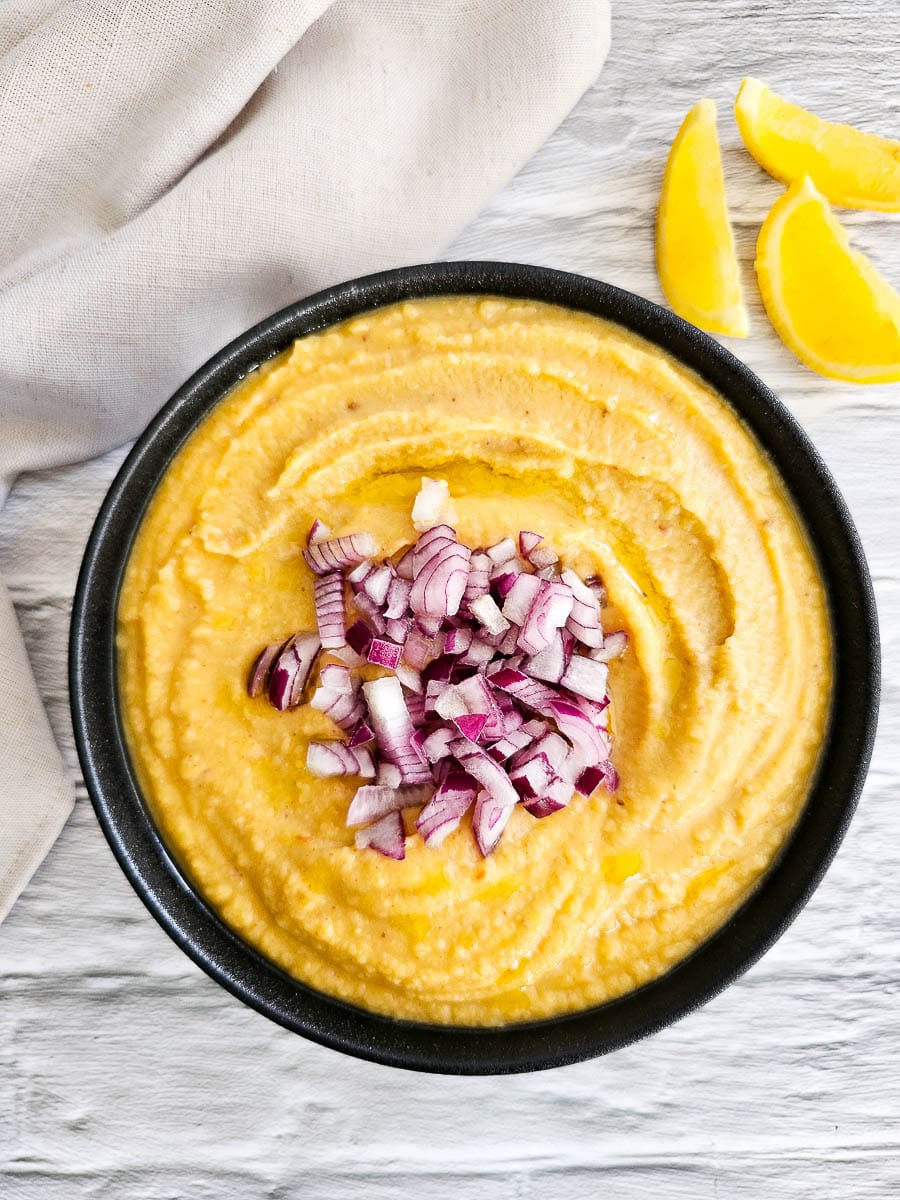
Greek Fava involves slowly simmering yellow split peas with onion and olive oil until they are soft and break down into a creamy purée. Once cooked, add some freshly squeezed lemon juice and a drizzle of extra virgin olive oil to enhance the flavour. It is simple, yet so flavourful, and makes for a hearty and satisfying meal. I prefer serving Fava as a main course paired with a baked snapper, fresh Greek Salad and some crusty bread, although it is often enjoyed as a dip. As a dip, Fava is often served as part of a meze platter with pita bread, olives or raw vegetables.
Ingredients for Fava (Yellow Split Pea Puree)
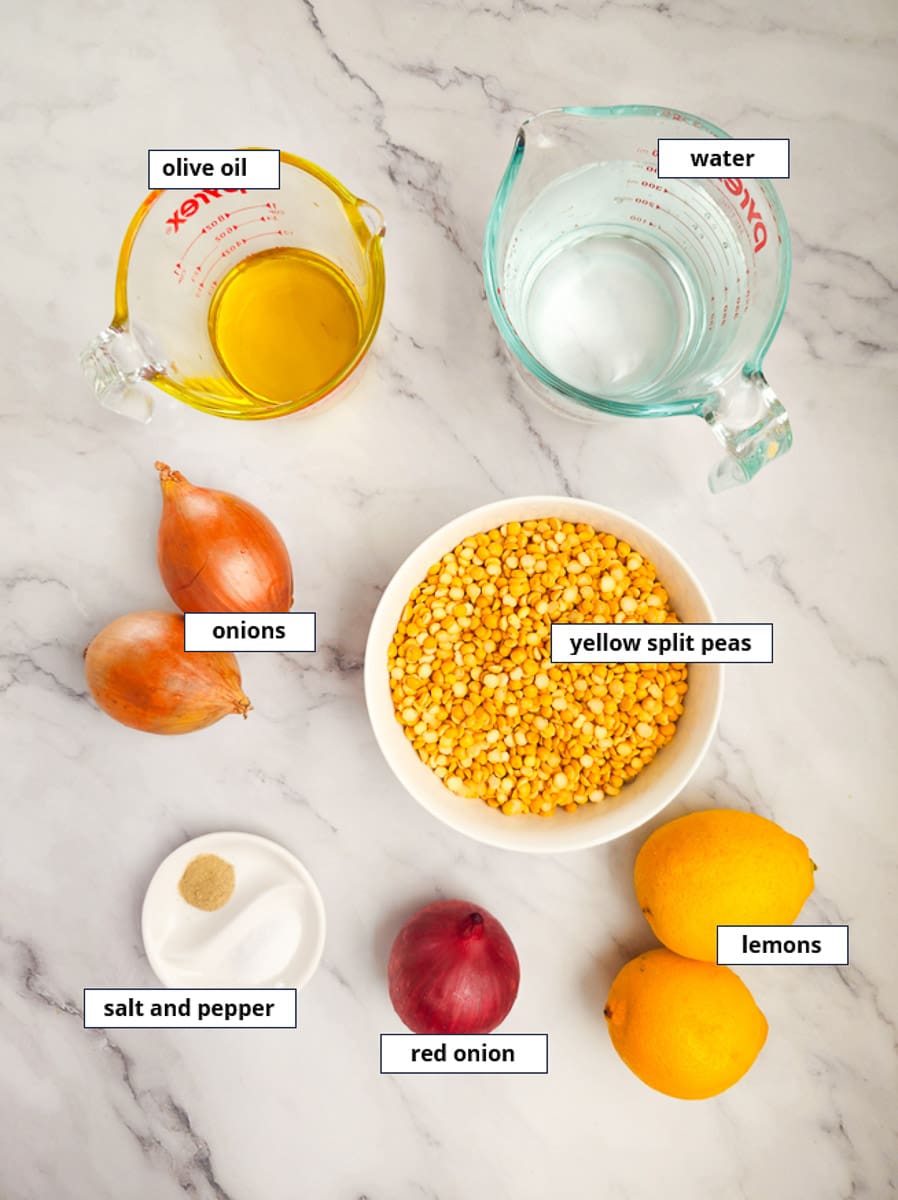
- Yellow split peas: These are the star of the dish, offering a creamy texture and mild, nutty flavour as they cook down into a smooth purée.
- Onions: They provide a rich, savoury base, adding depth and sweetness to the dish as they simmer with the peas.
- Olive oil: Essential for creating a silky texture and adding a touch of richness.
- Lemon juice: This adds a fresh, tangy taste that balances the creaminess of the peas and complements the dish’s flavours.
Health benefits of yellow split peas
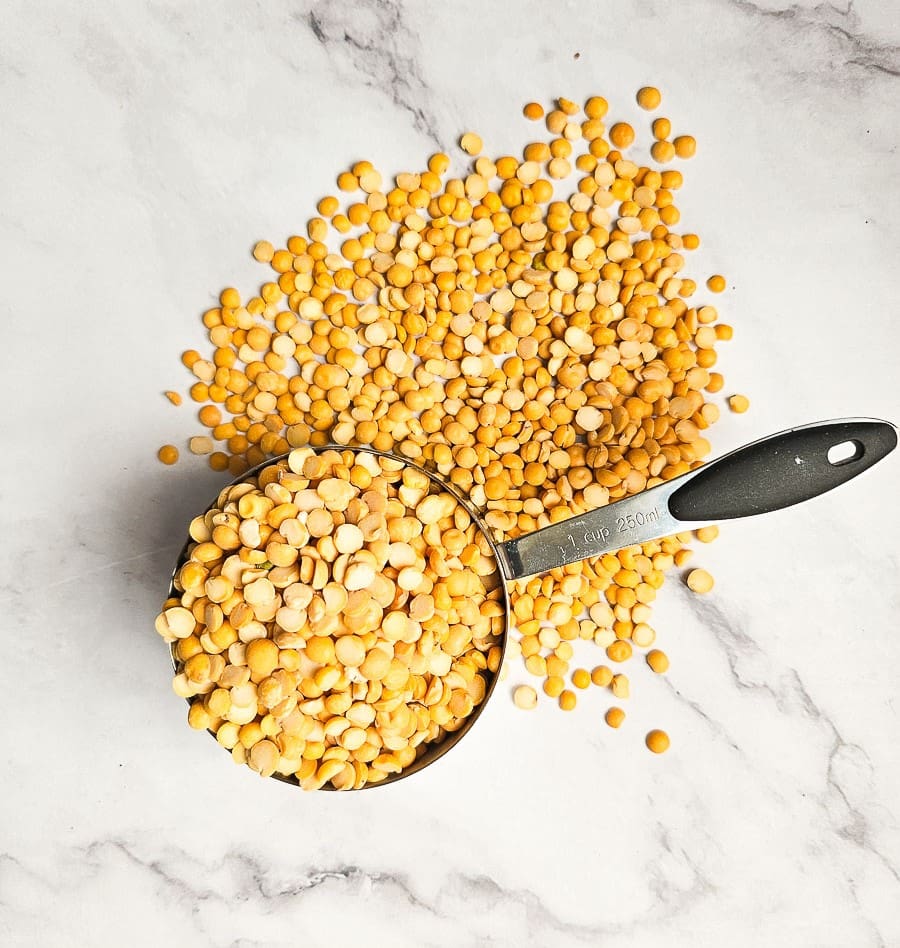
High in Protein: Yellow split peas are an excellent source of plant-based protein, which is essential for muscle repair and growth, and can be especially beneficial for vegetarians and vegans.
Rich in Fibre: They provide a significant amount of dietary fibre, which aids in digestion, helps regulate bowel movements, and can contribute to a feeling of fullness, assisting in weight management.
Supports Heart Health: The high fibre content, along with potassium and magnesium, helps to lower cholesterol levels, reducing the risk of heart disease.
Boosts Energy Levels: Packed with essential vitamins and minerals such as iron and folate, yellow split peas help improve energy levels and combat fatigue.
Stabilises Blood Sugar: With a low glycemic index, yellow split peas help stabilise blood sugar levels, making them a good option for managing diabetes and preventing blood sugar spikes.
Promotes Healthy Skin: The vitamins and minerals in yellow split peas, including vitamin C and zinc, support healthy skin by aiding in collagen production and protecting against oxidative stress.
How to make Fava (Yellow Split Pea Puree)
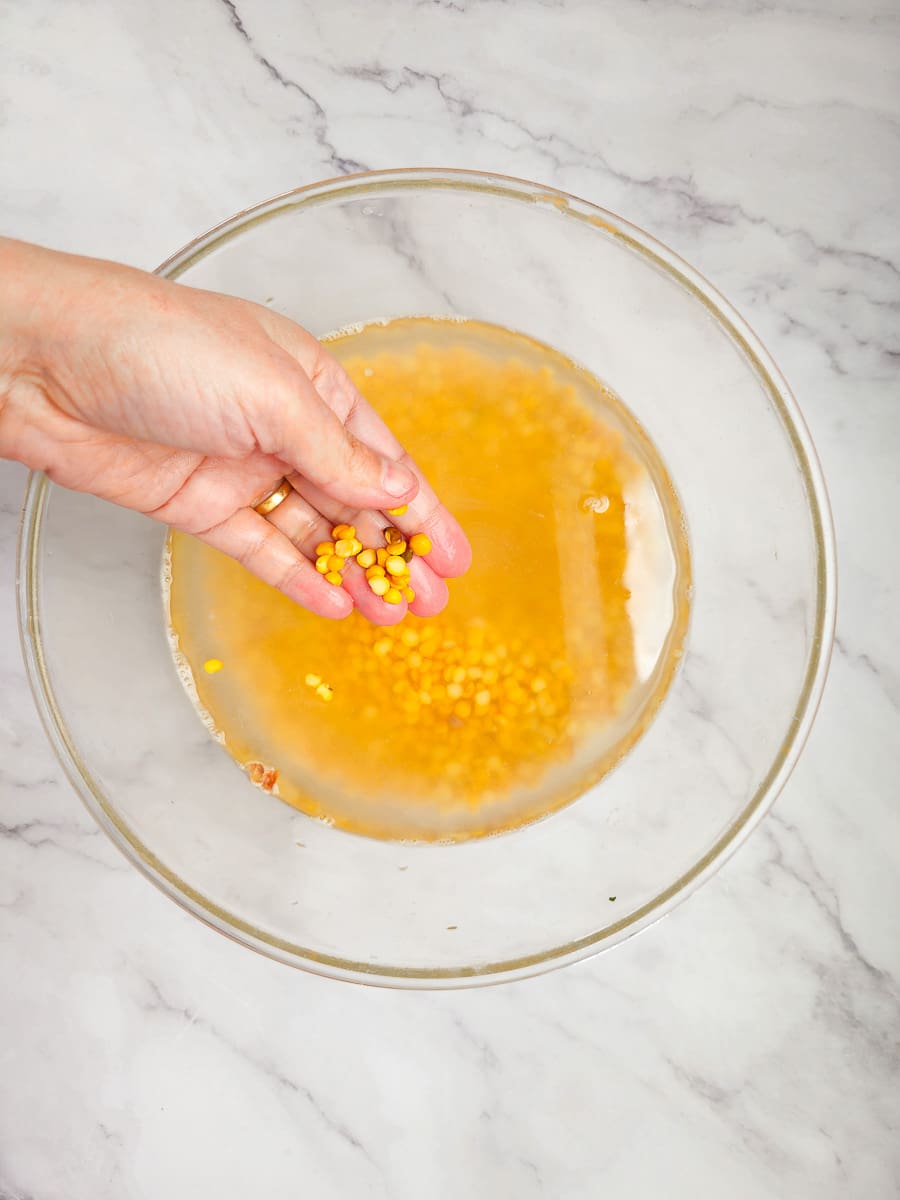
1. Place the split peas in a bowl with plenty of water. Pick out any discoloured peas. Drain in a colander and rinse well 2-3 times.
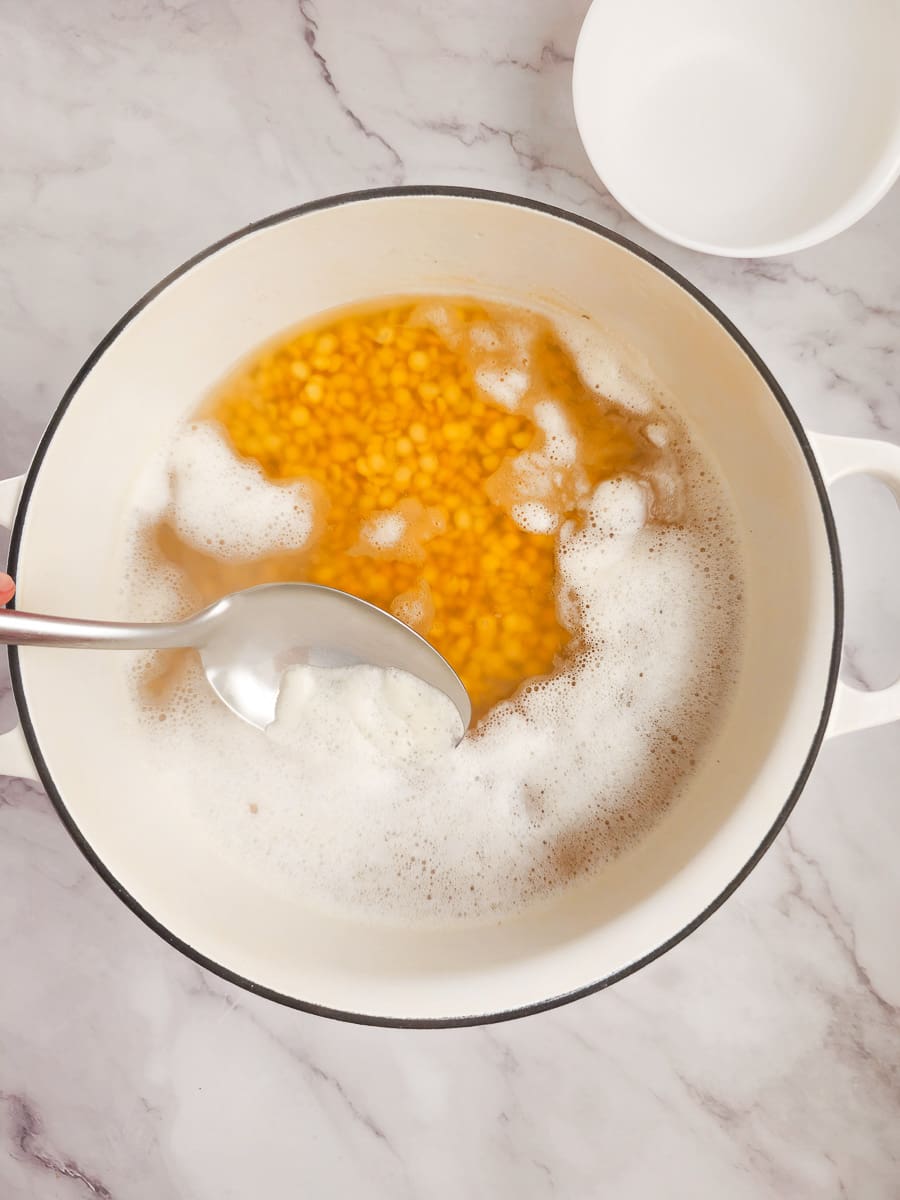
2. Add the rinsed peas to a clean pot and cover with fresh cold water. Bring to a boil. As it cooks, skim off any foam that forms on the surface.
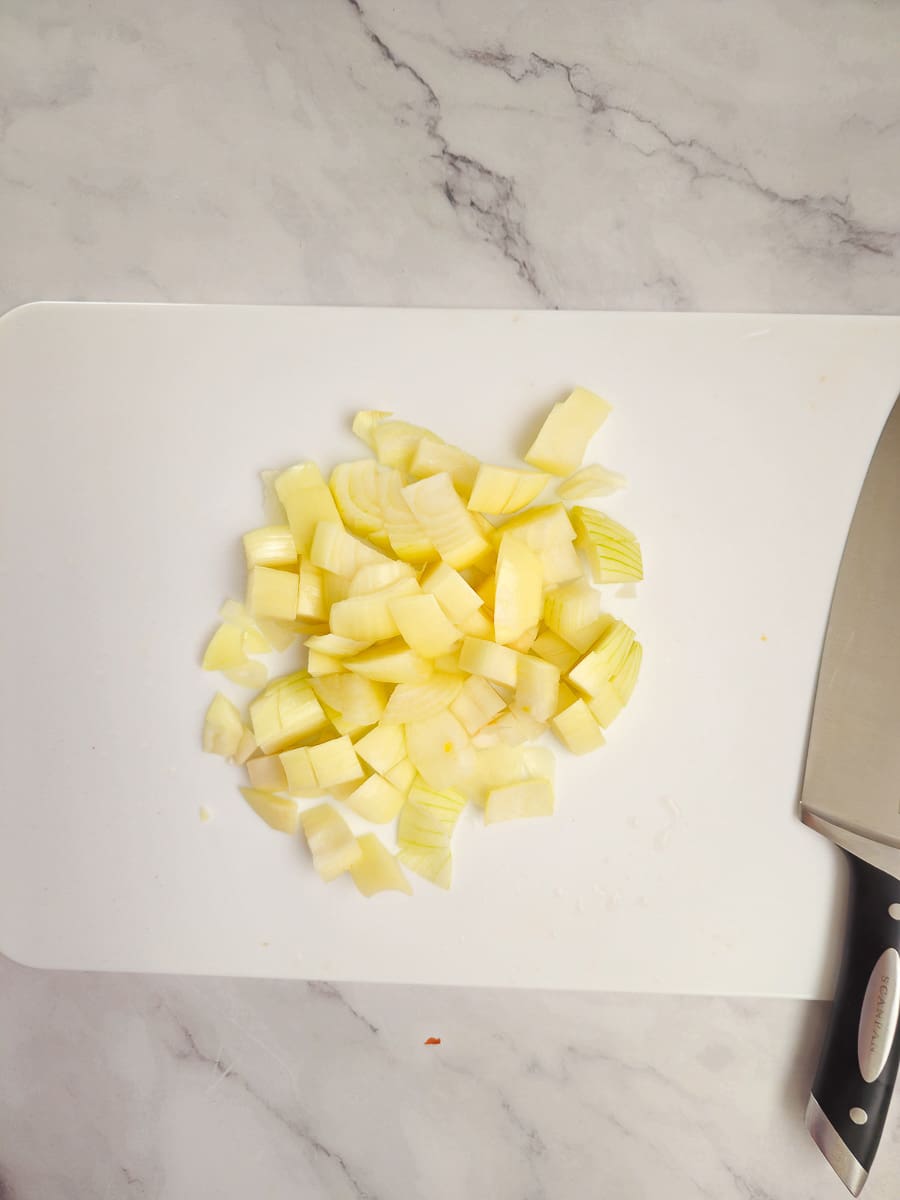
3. Dice onions.
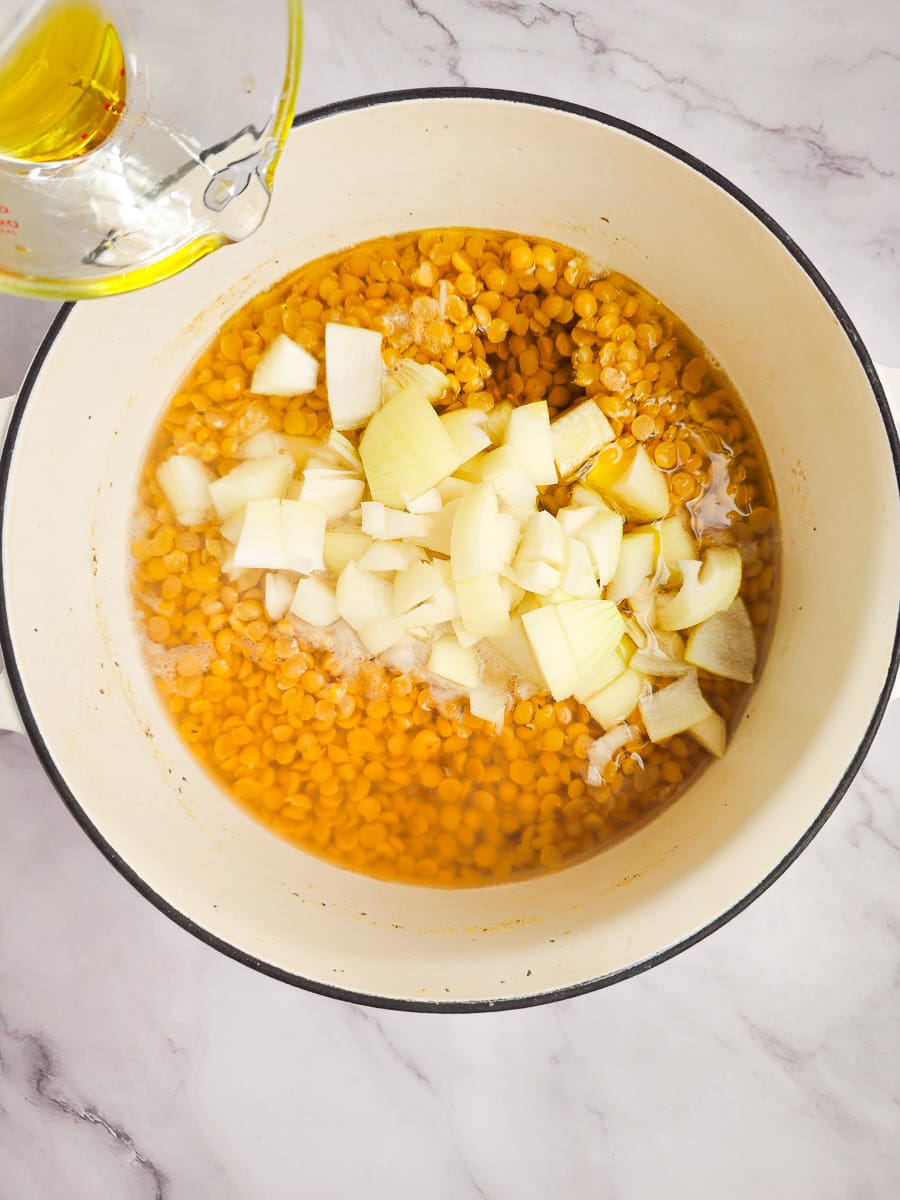
4. Add the diced onions, olive oil, salt and pepper to the pot.
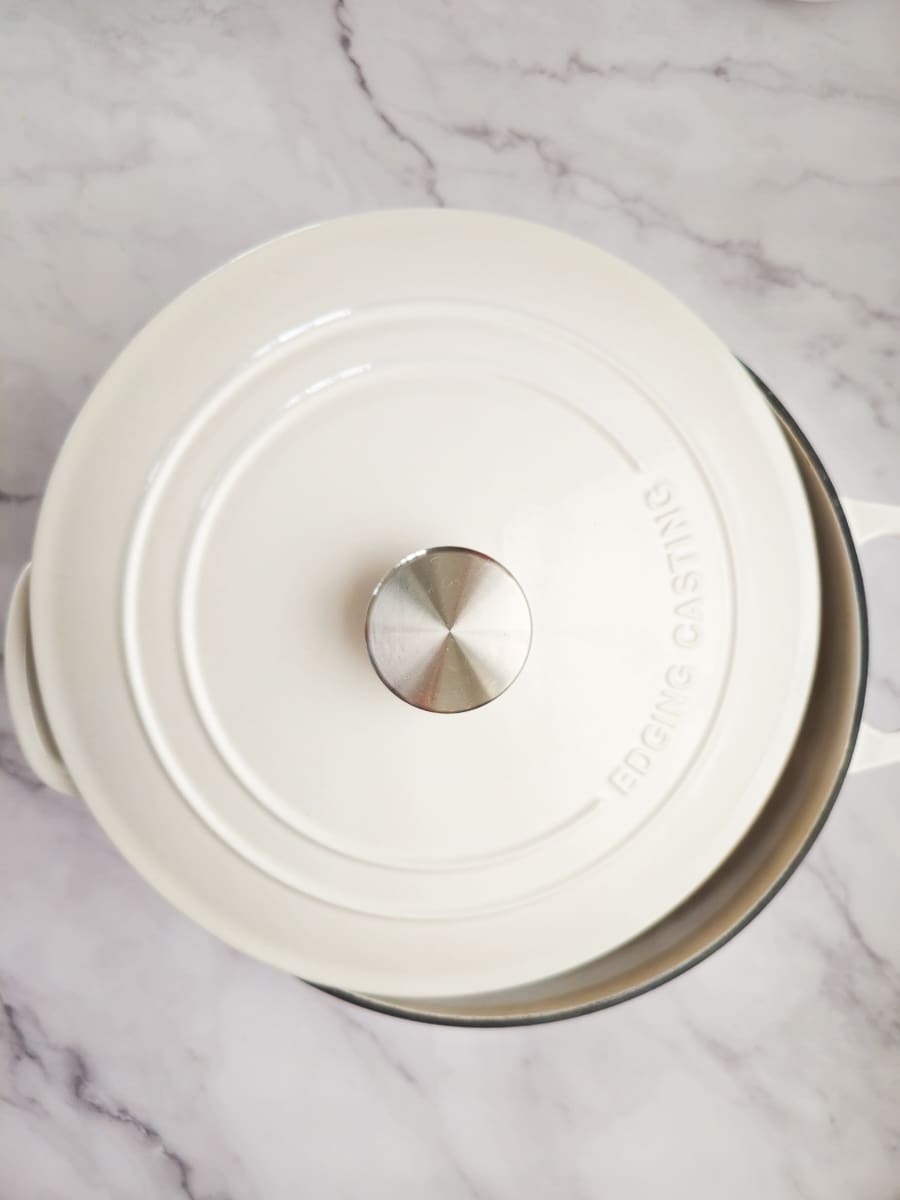
5. Reduce the heat and simmer over very low heat for 60-75 minutes, or until the peas are very soft and begin to mash together.
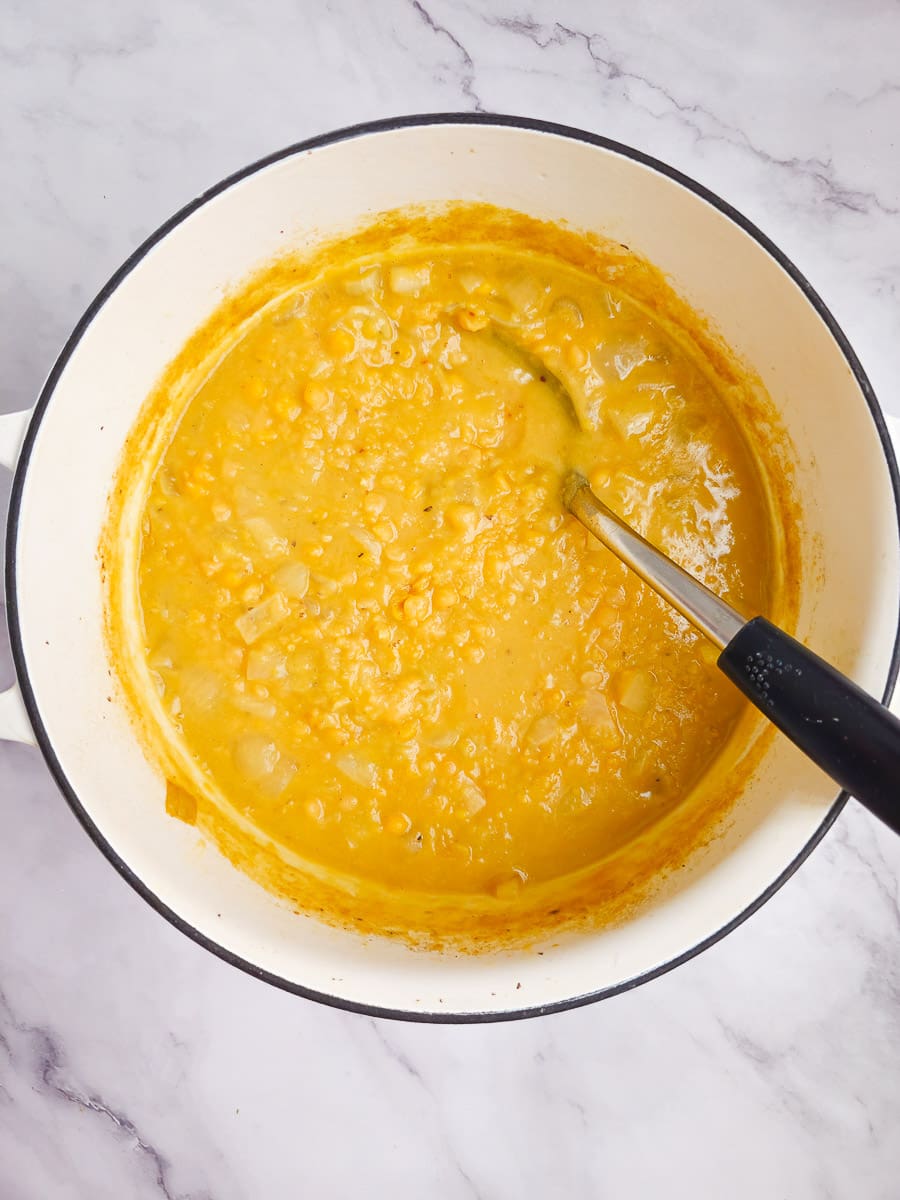
6. Once the split peas have softened and have begun to break down, remove the pot from the heat. Don’t worry if it looks a little watery. The Fava will thicken as it cools. If it looks too thick, add a little water.
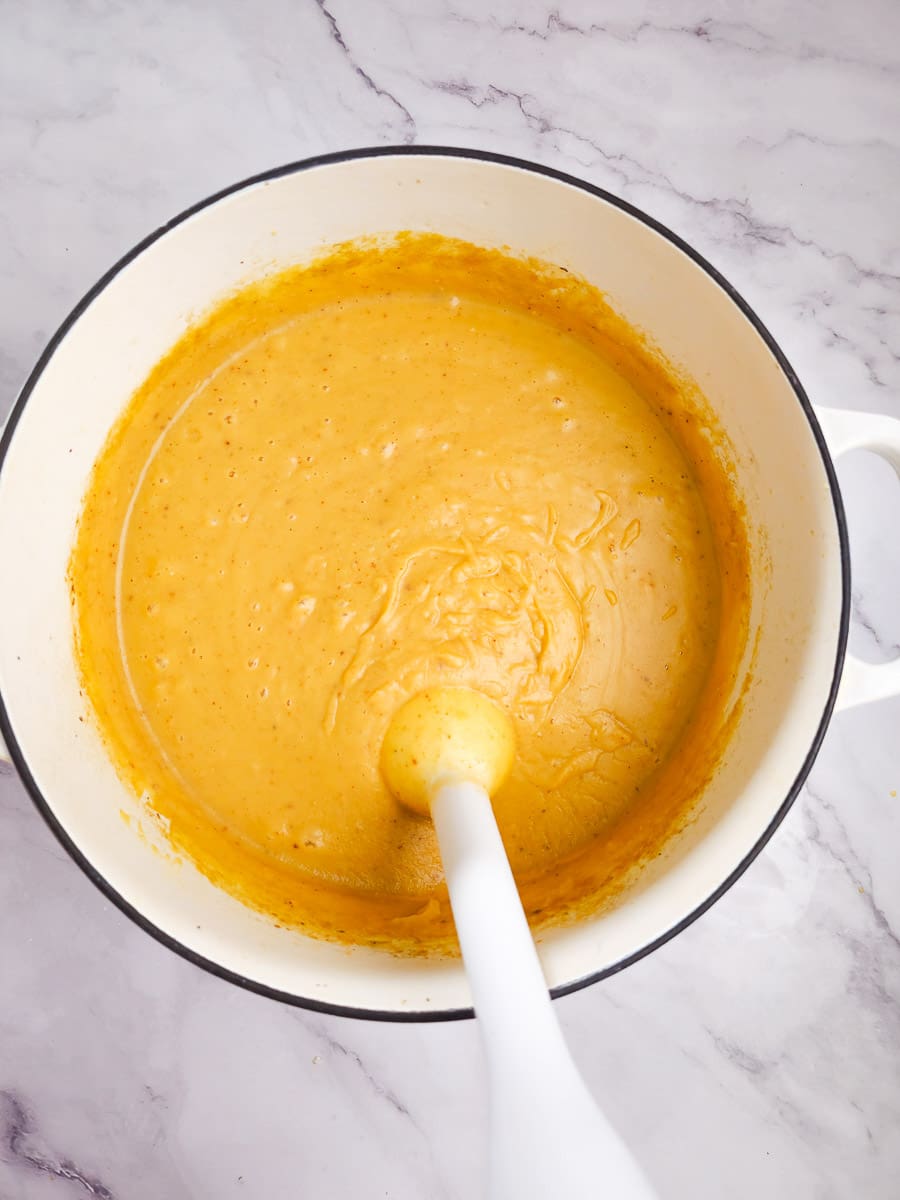
7. Using a stick blender, blend or pulse until smooth. For a chunkier texture, serve directly from the pot or mash with a potato masher.
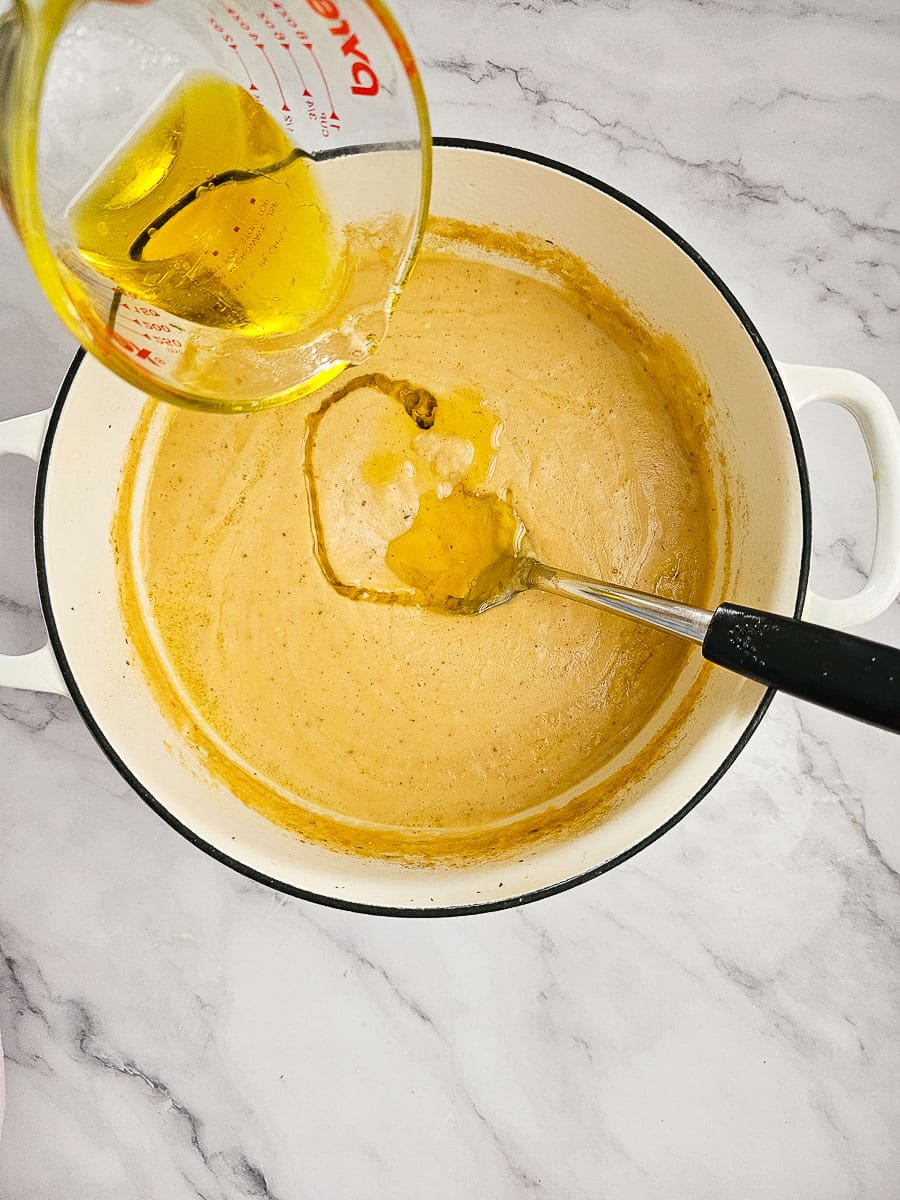
8. Stir in the extra olive oil and lemon juice. Let it cool for 10-15 minutes before serving, to allow the Fava to thicken.
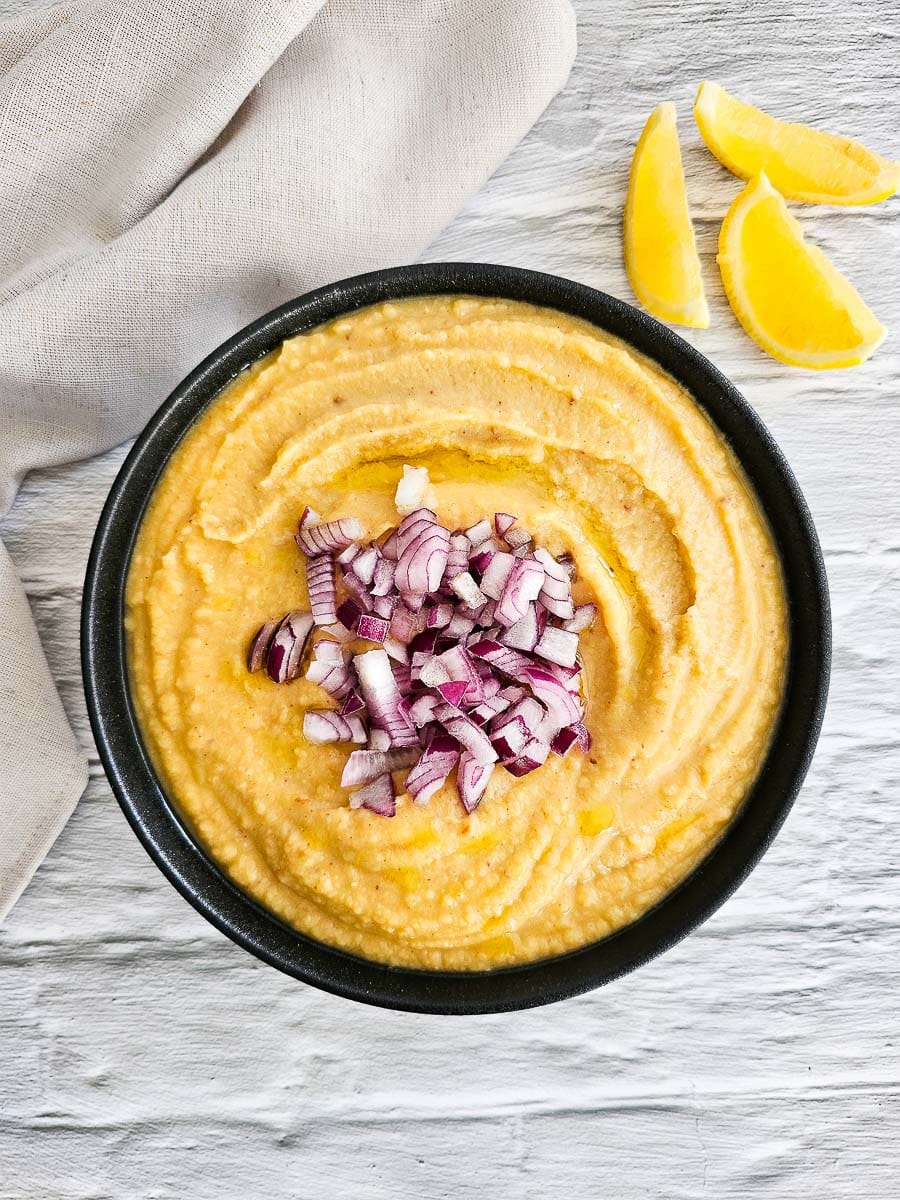
Serve warm or at room temperature with diced red onion or spring onions. Drizzle with additional olive oil and lemon juice, if desired.
Tips for making Fava (Yellow Split Pea Puree)
Should I soak the split peas before cooking?
Generally, you do not need to soak yellow split peas before cooking. Unlike whole peas or other legumes, split peas cook relatively quickly without soaking because they are already hulled and split. However, I recommend that you rinse them thoroughly to remove any dirt or debris.
Soaking can reduce the cooking time slightly and help improve digestibility, but it’s not essential. If you choose to soak them, a few hours in cold water is sufficient, but most recipes simply start by cooking them directly.
Why do I feel bloated after eating yellow split peas?
It is common to feel bloated after eating split peas. This usually happens due to the presence of indigestible sugars, specifically oligosaccharides, in legumes. These sugars are not easily broken down by your digestive system. Instead, they pass into the large intestine where gut bacteria ferment them, producing gas, which leads to bloating and discomfort.
Here are some tips to reduce bloating when eating split peas:
- Rinse thoroughly: Rinse the split peas at least 2-3 times before cooking until the water is almost clear. This removes some of the indigestible sugars.
- Soak (if desired): Although split peas don’t need to be soaked, soaking them for a couple of hours can reduce the gas-producing compounds.
- Bring the split peas to a boil in a saucepan for 2-3 minutes. Then discard all the water and rinse well.
- Skim off foam: Foam often rises to the surface during cooking. Skimming this off can help reduce the indigestible sugars.
- Cook thoroughly: Make sure the peas are well-cooked to break down the starches and sugars that can cause bloating.
- Gradual introduction: If you’re not used to eating high-fibre foods like legumes, introduce them slowly into your diet to allow your digestive system to adjust.
Skim off foam during cooking
As the peas boil, foam will rise to the surface. Skim this off to keep the mixture clear and prevent any bitter flavours from developing. It can also reduce the amount of indigestible sugars, which may help to minimise bloating and gas.
How to prevent Fava from sticking to the pot
Yellow split peas can stick to the bottom of the pot while boiling because they release starch as they cook. To prevent this, stir the peas occasionally, especially in the early stages of cooking. Additionally, cooking them over low to medium heat rather than high heat can help to avoid sticking. Make sure to use enough water so the peas have room to move as they soften.
How to achieve a creamy texture
Cook the split peas on very low heat for around 60-75 minutes, stirring occasionally. A slow simmer helps them break down properly, creating the creamy consistency Fava is known for.
What to serve with Fava (Yellow Split Pea Puree)
Greek Fava is versatile and pairs wonderfully with a variety of dishes. Serve this dish alongside baked snapper, a fresh Greek Salad, and crusty bread for a satisfying meal. It also complements roast chicken or Greek Meatballs (Keftedes) beautifully. Fava is also the perfect addition to a meze platter, served alongside pita bread, olives or raw vegetables.
Storage
Store leftovers in a sealed container in the refrigerator for 4-5 days. To reheat, heat in the microwave until heated through.


